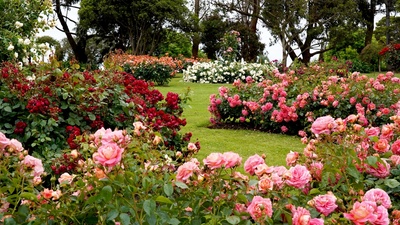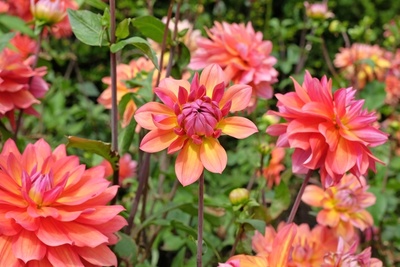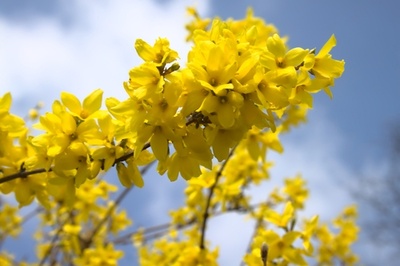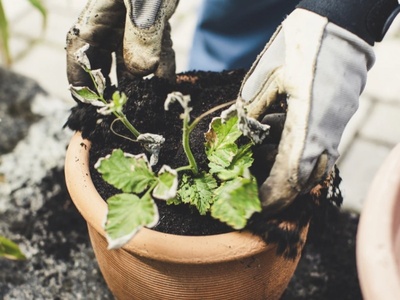
If you’re thinking of planting a hedge, it’s well worth considering deciduous shrubs. Deciduous shrubs are easy to grow and need an occasional trim. Deciduous hedging plants often have beautiful flowers and berries that attract wildlife to the garden, contributing to biodiversity. Many shrubs have fabulous autumn foliage, too. So, what are you waiting for, here are six of our favourite deciduous hedging plants.
Top 6 deciduous hedging plants
1. Beech
One of the most popular traditional hedging plants, beech (Fagus sylvatica) grows well in most free-draining soils, in sun or light shade. The new leaves are vivid green in spring, darkening slightly in summer and then turning gold in autumn. For real impact, choose copper beech (Fagus sylvatica ‘Atropurpurea’) with deep purple-bronze leaves that turn copper-coloured in autumn.
Beech grows about 30-60cm (1-2ft) per year and should be trimmed in late summer, giving it time to put on new leaves before winter. These leaves will turn brown but will stay on the plant until new leaves appear in spring, providing screening.
2. Hornbeam
If you like the look of a beech hedge, but your soil is heavy clay, hornbeam (Carpinus betulus) is the answer. It looks very similar to beech, but copes better with wet soils, although it doesn’t hold its leaves for as long through winter as beech does. Hornbeam grows faster than beech, so prune it twice a year, in June and September.
3. Forsythia
For a fabulous splash of early colour, it’s hard to beat a forsythia hedge. In spring, before the new leaves appear, the bare branches are smothered in a blaze of golden yellow flowers. This reliable shrub will grow in most soils, in sun or light shade. Cut it back immediately after flowering, and trim it again lightly in late summer to shape.
4. Rugosa rose
Rugosa roses (Rosa x rugosa) make a lovely informal hedge, with large colourful flowers all through summer followed by spectacular red hips in winter. Birds and bees will love it, and the very thorny stems provide good security. Trim in spring, wearing gloves! Rugosa roses are ideal for coastal gardens, grow well in sandy soil and like a sunny position.
5. Hawthorn
Hawthorn (Crataegus monogyna) is another excellent choice for wildlife-friendly gardens, with flowers in spring for bees, followed by berries for birds. The thorny branches also provide good security for nesting birds. Colourful autumn leaves and berries keep it looking good into winter. Trim in early summer after flowering is finished, and try to leave a few berries for the birds. For a more formal look, trim again in late summer.
6. Hardy fuchsia
In areas with mild winters, hardy Fuchsia magellanica makes a spectacular informal hedging choice, with vivid lipstick-pink flowers for months from summer well into autumn. It does best in a sheltered spot in partial shade. Trim it in early spring.
Winter and early spring is an ideal time to plant deciduous shrubs, while they are still dormant. Visit our centre to choose from our wide range of hedging shrubs for your garden.




